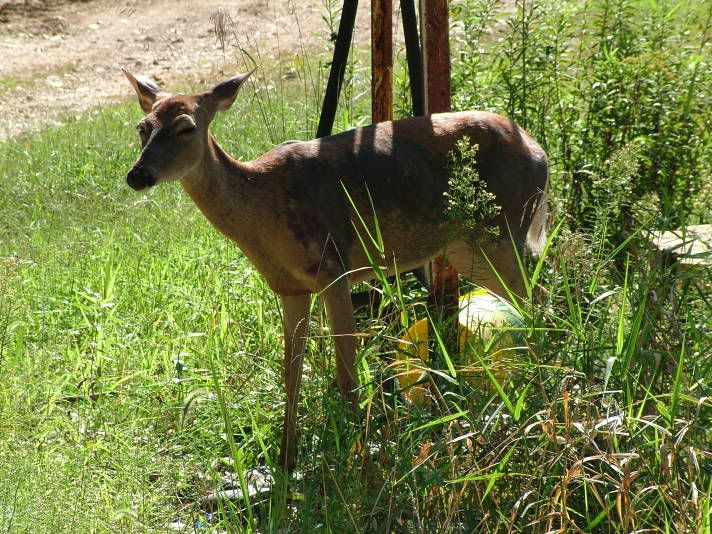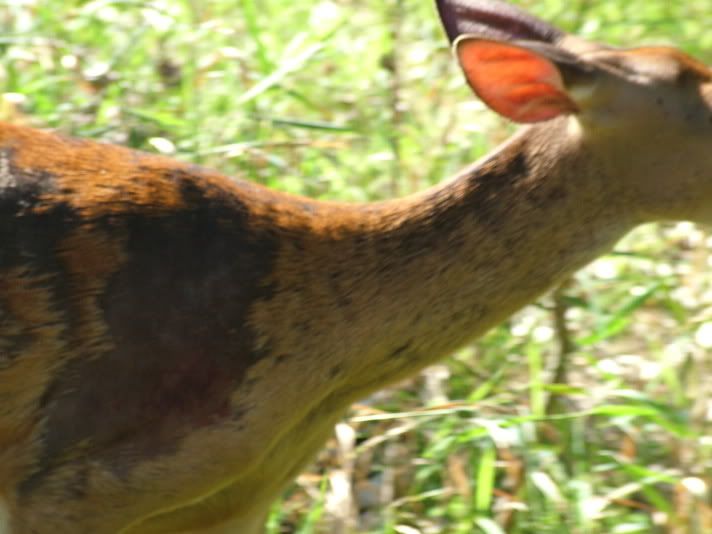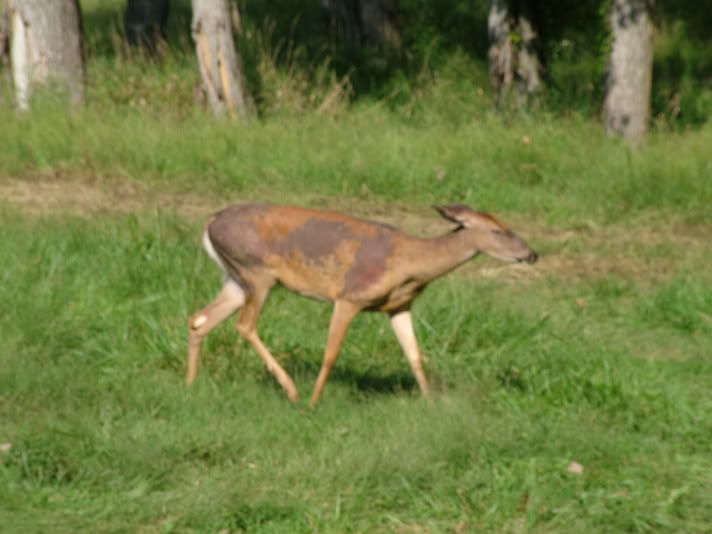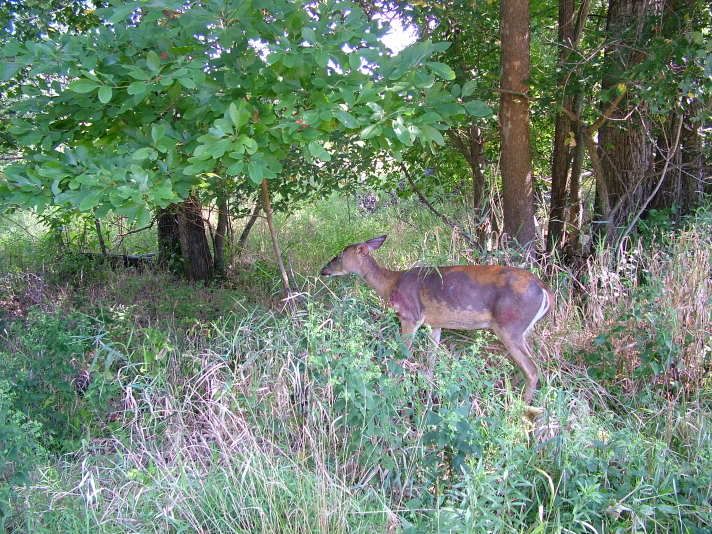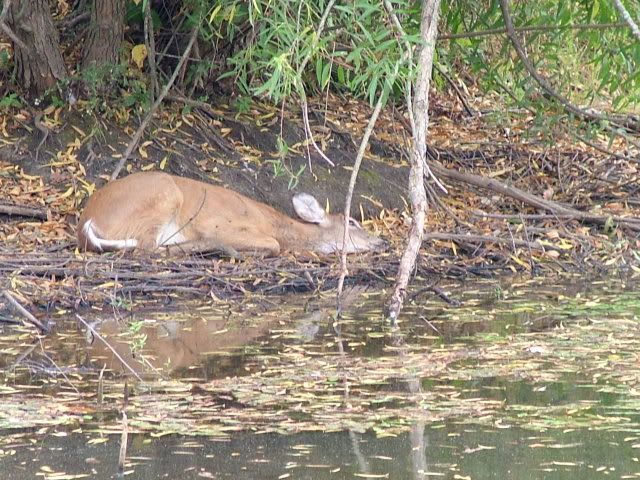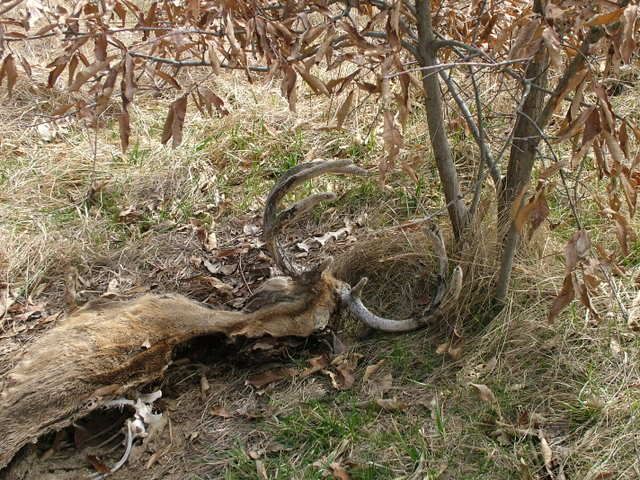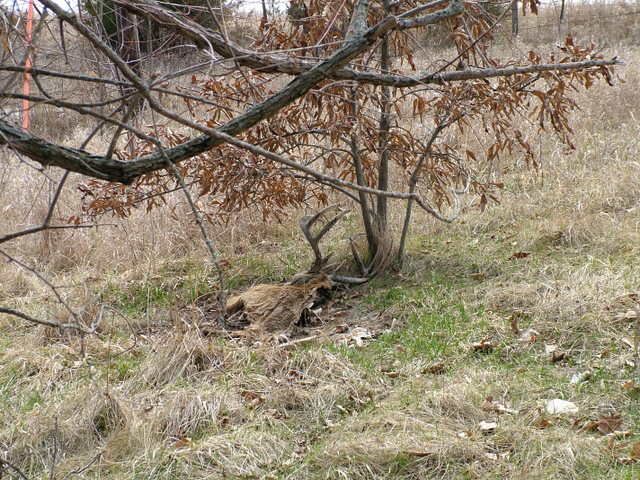So now that we have had years of over harvesting of our deer and have gotten the numbers down to a level that the IDNR has finally been allowed to reduce some seasons and doe quotas, we start hearing about something as bad or worse than the CWD which we have also confirmed this year. With surrounding States reporting this EHD just think what might happen to our much smaller but "healthier" deer herd if this does move into Iowa? We could easily be back to the tag lotto of the good old days before long!
Even with the article below, I don't think that "the sky is falling".
Hot, dry weather takes toll on Iowa wildlife
This drought is a hassle for wildlife as well as for people and plants — from fish dying in shallow waters to deer killed by a virus carried by heat-thriving insects.
Iowa Department of Natural Resources officials are warning of a threat to the state’s deer population from insects that have thrived in the dry conditions.
State officials are sorting through reports of more than 40 dead deer likely killed by epizootic hemorrhagic disease, or EHD. The disease is spread by female midge flies, known scientifically as
Culicoides sonorensis.
The midges bite the deer and spread a virus that causes high fever in deer, weakens cell walls in the lungs and heart, and ultimately causes death by internal hemorrhaging or dehydration.
The disease poses no threat to humans, Iowa DNR officials said, but how big of a threat it poses to deer is yet to be determined.
“It’s a time-will-tell situation,” said Tom Litchfield, a DNR deer specialist. “We don’t have a confirmed case yet, but the conditions are all there for EHD.”
One problem in diagnosing EHD: Researchers need to find a carcass that is relatively fresh. With temperatures past 90 degrees most days recently, decomposition has been a problem.
Litchfield said a suitable carcass was located this week, and results should be back from laboratory analysis in two to three weeks.
A few deer die each year from EHD, but the drought exacerbates the problem. The midges that spread the virus thrive in hot conditions. They breed in wet, muddy areas.
As the droughts have shrunk rivers and streams, more mud flats have been exposed.
Also, as creeks and streams have dried, deer have begun to congregate along rivers and streams to drink — in the same areas where the midges breed. The death toll could reach well into the hundreds, Litchfield said, but if fall rains replenish some water sources, the threat could be mitigated.
Other drought-related critter news:
• Shallow waters led to the deaths of an estimated 58,000 fish along the Des Moines River in southeast Iowa. The drought is leading to fish kills throughout the Midwest. DNR officials estimate the loss at more than $9 million total in the region.
Fish face more obstacles the longer it stays dry. If rains don’t replenish farm ponds, ice will freeze the ponds at dangerously low levels. That means fish won’t have enough oxygen to survive the winter, said Kevin Baskins, DNR spokesman.
“It could be a very bad winter for fish in Iowa,” he said.
• The fall could also bring an unwanted harvest of boxelder bugs, the nuisance insects that thrive in the heat and dry conditions, said Donald Lewis, Iowa State University professor of entomology.
“They could be relentless this fall,” Lewis said. “They don’t bite. They don’t harm plants, but they come in big bunches and invade houses when it gets cooler.
“There’s no good way to get rid of them. You can kill the ones you see, but more just take their place.”
• The drought could have an adverse effect on duck season, too. With ponds and lakes low, waterfowl are likely to migrate along the major rivers — the Mississippi and the Missouri — rather than through the middle of the state, Baskins said. Marshes and other areas are already depleted throughout the state.
• The pheasant population is going to be tough to count for DNR officials.
This month, DNR officers count pheasants along rural roads. The birds sleep in tall grasses and come out on the road to shake off the dew in the early mornings. However, because of high temperatures and relatively low humidity, the dew has not been forming, and the birds aren’t making their roadside appearances, Baskins said.
The count will be especially difficult because a warm, dry spring can make pheasant chick survival difficult.
Without morning dew, officials will have a difficult time deciphering how hard spring was on young pheasants.
Baskins emphasized no wildlife will be wiped out by the drought.
“Nature has a way of responding to everything,” he said. “All these species have ways of adapting to these conditions.”
http://www.desmoinesregister.com/ar...oll-on-Iowa-wildlife?Frontpage&nclick_check=1


